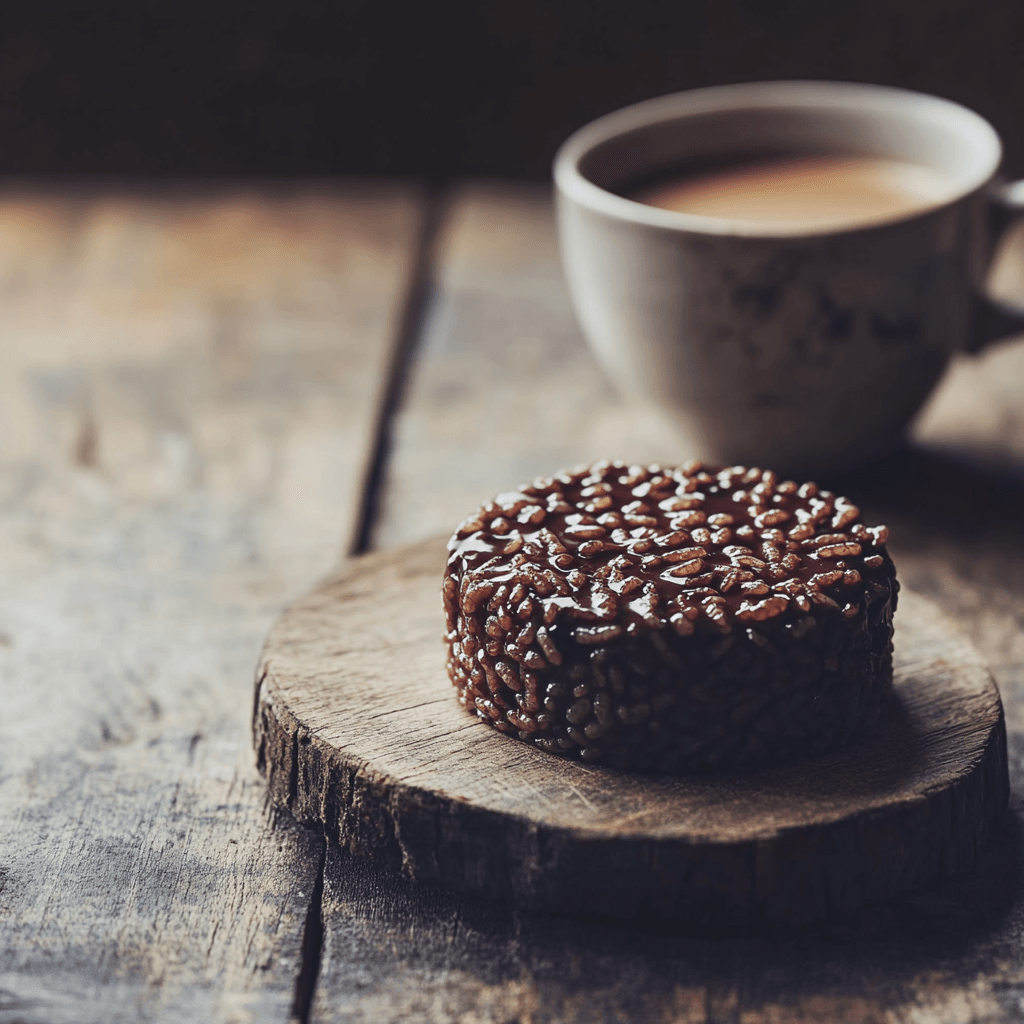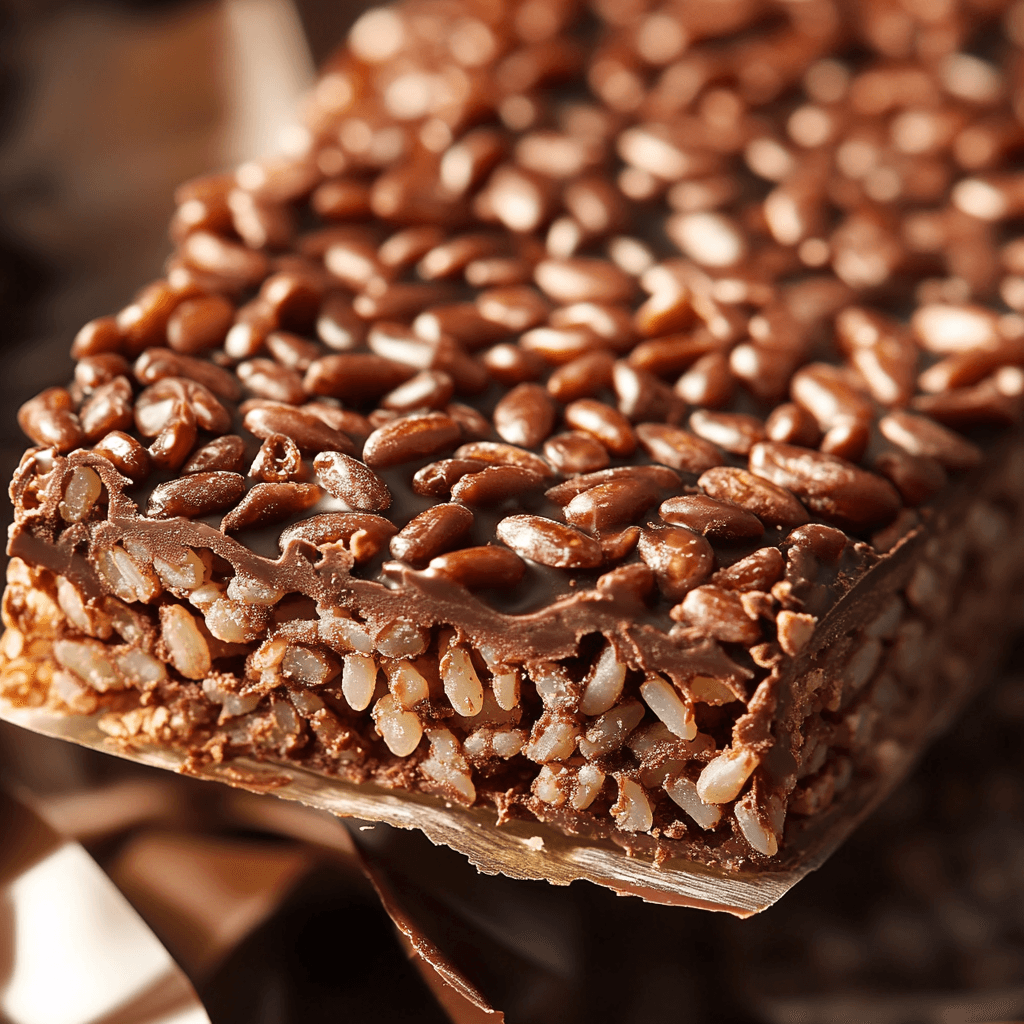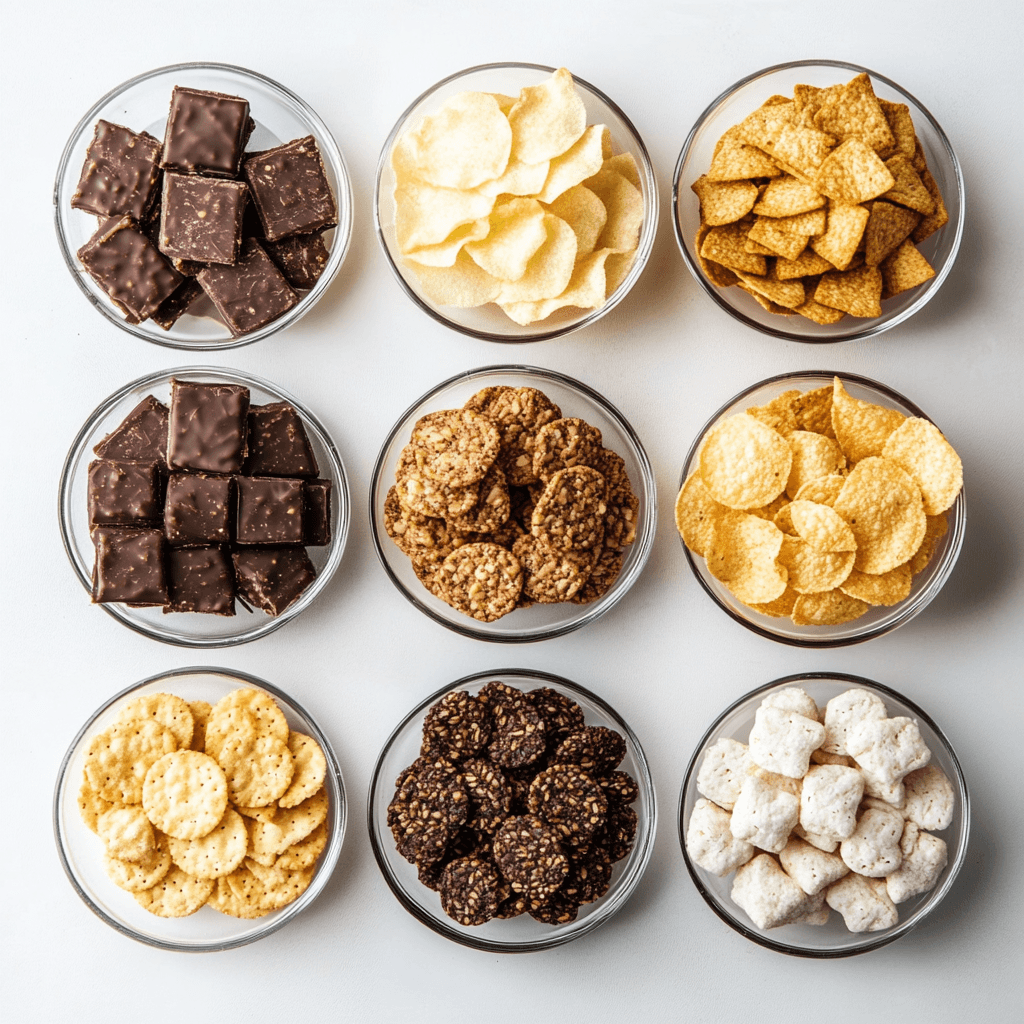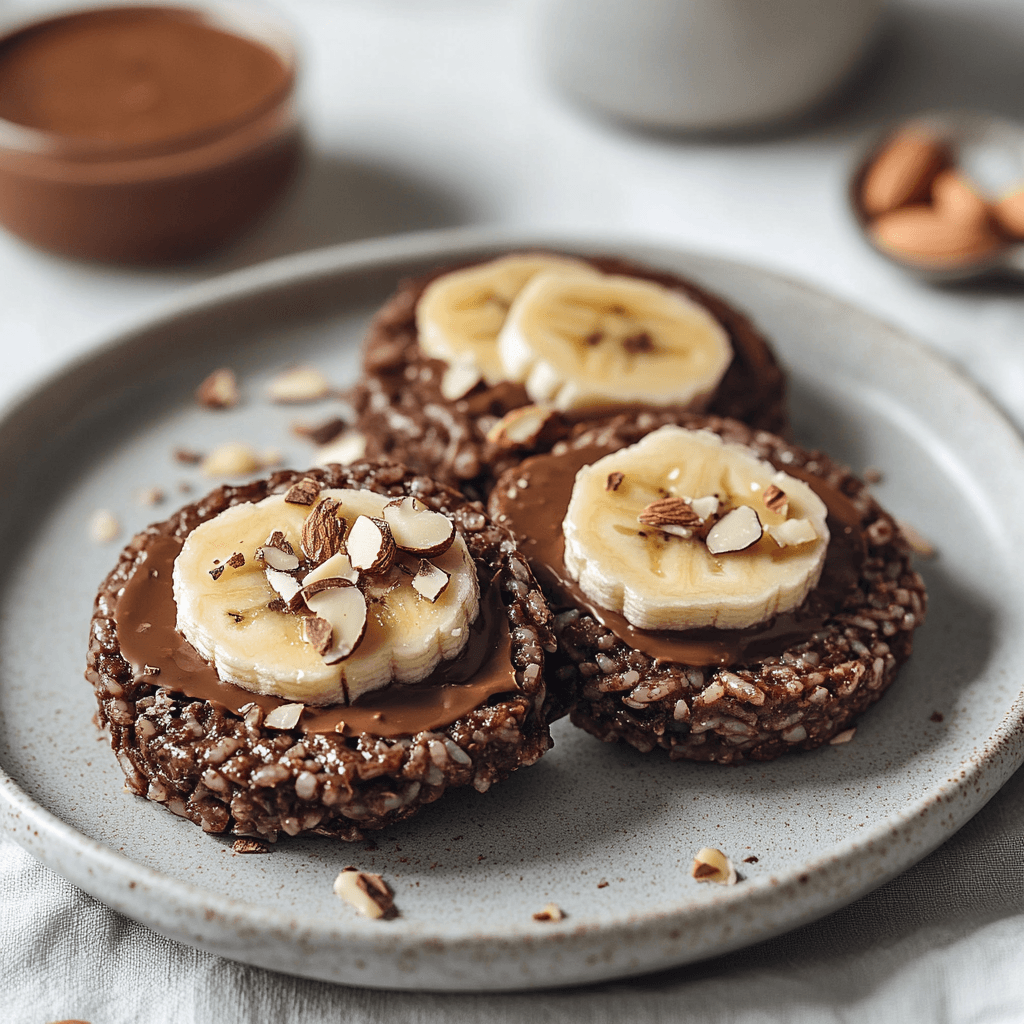What You Need to Know About Calories in Chocolate Rice Cakes

Chocolate rice cakes have carved out a niche in the world of healthy snacking, combining the crispy texture of puffed rice with the sweet indulgence of chocolate. These treats appeal to those who want a lighter snack option that doesn’t compromise on flavor. Available in various forms and flavors, chocolate rice cakes are a go-to choice for fitness enthusiasts, calorie-conscious individuals, and even kids who love a crunchy, sweet treat.
But one common question arises: How many calories are in a chocolate rice cake? Understanding the calorie content is essential, especially for those tracking their daily intake or trying to maintain a balanced diet. In this section, we’ll explore the nutritional profile of chocolate rice cakes and provide insights into their calorie content, as well as other macronutrients.
Table of Contents
Nutritional Information
Calories in Chocolate Rice Cakes: A Detailed Breakdown

Calorie Content of One Chocolate Rice Cake
How Many Calories Are in a Single Chocolate Rice Cake?
On average, one chocolate rice cake contains 60 to 80 calories, depending on the brand and recipe. The calorie count is primarily influenced by the chocolate coating and the size of the rice cake. Larger cakes with thicker chocolate layers may have higher calorie counts, while smaller, lightly coated versions tend to fall on the lower end of the spectrum.
For example:
- Generic Chocolate Rice Cake: ~70 calories
- Mini Chocolate Rice Cakes (Per Cake): ~25 calories
- Thickly Coated Chocolate Rice Cakes: ~90 calories
Macronutrient Breakdown
In addition to calories, chocolate rice cakes typically have the following macronutrient profile:
- Carbohydrates: ~12-15 grams per rice cake, primarily from the puffed rice and chocolate.
- Fats: ~2-3 grams per rice cake, largely due to the chocolate coating.
- Proteins: ~1-2 grams per rice cake, depending on the brand and added ingredients.
These snacks are low in protein and fats compared to other snack options, making them more carbohydrate-heavy.
Variations by Brand and Flavor
Different brands and flavor combinations can slightly alter the calorie and nutrient content. Some common variations include:
- Dark Chocolate Rice Cakes: These typically have fewer added sugars and slightly fewer calories than milk chocolate versions.
- Peanut Butter Chocolate Rice Cakes: Often higher in calories due to the inclusion of peanut butter as a topping.
- Sugar-Free Chocolate Rice Cakes: Lower in calories, as they use sugar alternatives like stevia.
Factors Affecting Calorie Count
- Chocolate Coating Thickness: Thicker coatings mean more calories due to higher sugar and fat content.
- Size of the Rice Cake: Larger rice cakes naturally contain more calories.
- Added Ingredients: Some brands add toppings like nuts, caramel, or drizzle, which can increase the calorie count.
Comparison to Other Snacks
Are Calories in Chocolate Rice Cakes Lower Than in Other Snacks?

Chocolate rice cakes are often chosen as a healthier alternative to more calorie-dense snacks. This section will explore how they compare to similar snack options and whether they truly live up to their reputation as a light snack.
Calorie Count Comparison with Similar Snacks
When compared to other popular snacks, chocolate rice cakes fall on the lower end of the calorie spectrum. Here’s how they stack up:
- Chocolate Rice Cake: ~70 calories per cake
- Granola Bar (Chocolate-Coated): ~150-200 calories per bar
- Chocolate Chip Cookie: ~140-180 calories per cookie
- Potato Chips (1 Serving): ~150 calories per 1-ounce serving
- Plain Rice Cake: ~35 calories per cake
This comparison highlights that chocolate rice cakes provide a middle ground between plain rice cakes and more indulgent snacks like cookies or chips. While they are slightly higher in calories than plain rice cakes, the addition of chocolate makes them more satisfying for those craving something sweet.
Chocolate Rice Cakes vs. Regular Rice Cakes
- Calorie Difference:
- A plain rice cake contains roughly 30-40 calories, while a chocolate rice cake averages 70-80 calories due to the added chocolate coating.
- Taste and Satisfaction:
- Chocolate rice cakes offer more flavor and sweetness, making them a preferred choice for satisfying a sweet tooth without consuming excessive calories.
- Nutritional Content:
- Plain rice cakes are lower in sugar and fat but can feel less satisfying as they lack the richness provided by chocolate.
Healthier Alternatives to Chocolate Rice Cakes
For those looking to reduce calorie or sugar intake further, several healthier alternatives to chocolate rice cakes are available:
- Dark Chocolate Coated Rice Cakes: Opt for rice cakes with a thin dark chocolate layer, which often contains less sugar and more antioxidants.
- Homemade Rice Cakes: Make your own by spreading a small amount of melted dark chocolate on plain rice cakes.
- Nut Butter Toppings: Use plain rice cakes with a thin layer of almond butter or peanut butter for a protein boost and natural sweetness.
- Fruit-Topped Rice Cakes: Add fresh fruit slices, such as strawberries or bananas, to plain rice cakes for a naturally sweet and nutrient-rich snack.
Are Chocolate Rice Cakes Truly a Healthy Snack?
While chocolate rice cakes are lower in calories compared to traditional chocolate snacks, they are not necessarily a “health food.” They are processed snacks with added sugar and may lack the essential nutrients found in whole foods. To make them part of a balanced diet, pair them with a protein source like a handful of nuts or a yogurt cup to improve satiety and nutrient balance.
Benefits of Chocolate Rice Cakes
Why Calories in Chocolate Rice Cakes Make Them a Great Snack Choice

Chocolate rice cakes are not just a tasty snack but also come with several benefits that make them a popular choice among health-conscious individuals. Let’s explore why these snacks have earned a place in many kitchens.
Advantages of Chocolate Rice Cakes
- Low-Calorie Sweet Treat:
- At roughly 70 calories per cake, chocolate rice cakes offer a guilt-free way to satisfy sweet cravings without consuming excessive calories.
- Ideal for people looking to enjoy dessert-like snacks while maintaining a calorie-controlled diet.
- Portion Control Made Easy:
- Individually wrapped or pre-portioned, chocolate rice cakes provide an easy way to avoid overeating.
- Compared to snacks like cookies or chips that encourage mindless eating, rice cakes come in clear, manageable serving sizes.
- Versatile Snack Option:
- Chocolate rice cakes can be eaten as-is or paired with other toppings like nut butter, yogurt, or fruit for a more filling snack.
- They fit into various dietary plans, from low-calorie diets to vegetarian or vegan lifestyles (depending on the brand).
Gluten-Free and Vegan Options
- Gluten-Free Friendly:
- Most rice cakes, including chocolate-coated ones, are naturally gluten-free, making them a safe snack for individuals with gluten sensitivities or celiac disease.
- Always check the label to ensure there’s no cross-contamination or gluten-containing additives.
- Vegan Alternatives:
- Many chocolate rice cakes are made with plant-based ingredients, offering a vegan-friendly sweet snack.
- Look for brands that use dairy-free chocolate or specify vegan certification on the label.
Convenience and Portability
- Perfect On-the-Go Snack:
- Lightweight and non-perishable, chocolate rice cakes are easy to pack for work, school, or outdoor activities.
- Unlike chocolate bars, they are less likely to melt, making them practical for travel or warmer climates.
- Kid-Friendly Option:
- With their sweet yet subtle flavor, chocolate rice cakes are a great snack for children.
- They’re less messy compared to chocolate bars or cookies, making them a convenient choice for lunchboxes or playdates.
How Chocolate Rice Cakes Fit into a Balanced Diet
Chocolate rice cakes can be part of a balanced diet when consumed mindfully. Here’s how:
- Pair them with protein or healthy fats, such as a handful of almonds or a boiled egg, to enhance satiety.
- Use them as a pre- or post-workout snack to replenish energy without overloading on sugar or calories.
- Enjoy them as an occasional dessert alternative to reduce sugar and calorie intake while still indulging in a sweet treat.
While chocolate rice cakes provide several benefits, it’s important to balance them with nutrient-dense foods to ensure your diet meets all your nutritional needs.
Potential Drawbacks of Chocolate Rice Cakes

While chocolate rice cakes offer several benefits, they also come with potential downsides that are worth considering. Understanding these drawbacks can help you make informed choices about incorporating them into your diet.
Risk of Overeating
Chocolate rice cakes, though light and low in calories individually, can become a problem if eaten in large quantities.
- Low Satiety:
- Due to their airy and low-fiber composition, they may not be as filling as other snacks, leading to overconsumption.
- Eating multiple rice cakes in one sitting can quickly add up in calories and sugar.
- Mindless Snacking:
- Their low weight and crunchiness can encourage mindless snacking, especially when eaten straight from the package.
Sugar Content
- Added Sugars in Chocolate Coating:
- The chocolate coating on rice cakes often contains added sugars, which can contribute to excessive sugar intake if consumed frequently.
- For example, one chocolate rice cake may contain 6-10 grams of sugar, depending on the brand.
- Health Impact of Excess Sugar:
- Consuming too much added sugar can increase the risk of weight gain, tooth decay, and other health concerns such as elevated blood sugar levels.
Lack of Nutritional Density
Chocolate rice cakes are considered a processed snack, which means they may lack the essential nutrients found in whole, unprocessed foods.
- Low in Fiber and Protein:
- With only 1-2 grams of protein and negligible fiber, they are not as nutrient-dense as snacks like nuts, seeds, or fruit.
- As a result, they may not keep you full for long.
- Minimal Vitamins and Minerals:
- Rice cakes, including chocolate-coated ones, are not a significant source of vitamins or minerals, offering little in terms of nutritional value beyond carbohydrates.
Processing and Additives
- High Level of Processing:
- Many commercially produced chocolate rice cakes contain refined ingredients, preservatives, and artificial flavors to extend shelf life.
- These additives can diminish the health benefits associated with rice cakes.
- Sodium Content in Some Brands:
- Certain brands add a small amount of salt to enhance flavor, which might be a concern for those watching their sodium intake.
Who Should Limit Chocolate Rice Cakes?
- Individuals with High Sugar Sensitivity:
- People managing conditions like diabetes should monitor their intake carefully due to the sugar in the chocolate coating.
- Those Seeking Nutrient-Dense Foods:
- If your goal is to consume nutrient-rich snacks, there are better options available, such as fresh fruit, yogurt, or trail mix.
Despite these drawbacks, chocolate rice cakes can still be part of a healthy diet if eaten in moderation and paired with nutrient-dense foods. Being aware of their limitations ensures they are consumed as a treat rather than a staple.
Frequently Asked Questions (FAQs)
To address common concerns and provide clarity, here are answers to frequently asked questions about chocolate rice cakes.
Are chocolate rice cakes good for weight loss?
Chocolate rice cakes can be part of a weight-loss diet if eaten in moderation. They are relatively low in calories, but since they are low in protein and fiber, they may not keep you full for long. Pairing them with a protein source like peanut butter can make them more satisfying.
How many calories are in different flavors of rice cakes?
The calorie content of rice cakes varies based on their flavor and additional coatings:
- Plain Rice Cake: ~35-40 calories per cake.
- Chocolate Rice Cake: ~60-80 calories per cake, depending on the brand and chocolate thickness.
- Caramel Rice Cake: ~50-60 calories per cake.
- Yogurt-Coated Rice Cake: ~70-90 calories per cake.
- Peanut Butter Rice Cake: ~90-100 calories per cake, due to added fat and protein.
Can I eat chocolate rice cakes on a diet?
Yes, chocolate rice cakes can be included in a diet, especially as a low-calorie alternative to traditional chocolate snacks.
- They are great for calorie-conscious diets but should be consumed in moderation due to their sugar content.
- To make them more filling, pair them with protein-rich foods like nuts, seeds, or Greek yogurt.
Are chocolate rice cakes suitable for kids?
Yes, chocolate rice cakes can be a kid-friendly snack.
- They are less messy than chocolate bars and provide a light, sweet treat for children.
- However, monitor portion sizes and opt for brands with lower sugar content to ensure they fit into a healthy diet for kids.
How many chocolate rice cakes should I eat in one serving?
The ideal serving size depends on your dietary goals and hunger levels.
- A standard serving is one or two rice cakes, which equals approximately 70-140 calories.
- Eating more than this may contribute to excessive calorie or sugar intake, especially if other snacks are consumed throughout the day.
Are chocolate rice cakes gluten-free?
Most chocolate rice cakes are naturally gluten-free, as they are made from puffed rice and chocolate. However:
- Always check the packaging for a “gluten-free” certification, especially if you have celiac disease or severe gluten intolerance.
- Some brands may process their rice cakes in facilities that handle gluten-containing ingredients.
Can diabetics eat chocolate rice cakes?
Chocolate rice cakes have a high glycemic index and can cause blood sugar spikes. People with diabetes should consume them in moderation and pair them with protein or healthy fats to reduce their impact on blood sugar levels.
Are chocolate rice cakes vegan?
Some chocolate rice cakes are vegan, but others may contain dairy-based ingredients in the chocolate coating. Check the ingredient list to ensure they are suitable for a vegan diet.
Are there healthier chocolate rice cake options?
Yes, there are healthier options available, including:
- Dark Chocolate Rice Cakes: Lower in sugar and higher in antioxidants than milk chocolate versions.
- Sugar-Free Rice Cakes: Made with alternative sweeteners like stevia or monk fruit.
- Homemade Rice Cakes: Spread melted dark chocolate on plain rice cakes for a customizable, healthier version.
Final Tips
To maximize the benefits of chocolate rice cakes, consider:
- Reading labels to choose low-sugar options.
- Limiting consumption to one or two rice cakes at a time.
- Pairing them with whole foods to increase nutritional value.
Conclusion
Chocolate rice cakes are a versatile and enjoyable snack that strikes a balance between indulgence and healthy eating. With an average of 60-80 calories per serving, they cater to those looking for a light, satisfying treat without the guilt associated with more calorie-dense snacks. They are particularly appealing for their portability, gluten-free options, and ability to fit into various dietary preferences.
However, it’s essential to be mindful of their sugar content and lack of significant nutritional density. Pairing chocolate rice cakes with nutrient-rich foods like nuts, yogurt, or fresh fruit can help enhance their nutritional value and make them more satiating. For those with specific dietary concerns, healthier alternatives like dark chocolate rice cakes or homemade versions offer even greater control over sugar and calorie content.
Incorporating chocolate rice cakes into your diet is simple and enjoyable when done in moderation. Whether you’re managing a calorie-conscious lifestyle or simply looking for a convenient snack, these treats can satisfy your cravings while supporting your health goals.
Print
How Many Calories Are in 1 Chocolate Rice Cake?
Description
The calorie count in one piece of Chocolate Rice Cake depends on the portion size and ingredients used. Based on the recipe I provided (divided into 12 servings), each slice contains approximately:
Notes
- Adding chocolate chips or nuts will slightly increase the calorie count.
- Using low-fat milk or dairy alternatives can slightly reduce calories.
Nutrition
- Calories: ~230–250g
- Sugar: 15g
- Fat: 10g
- Carbohydrates: ~35g
- Protein: ~3g
